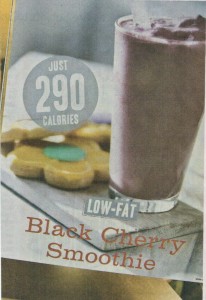 Of course advertising, by definition exists to communicate a message to the viewer. However the average viewer is basically lazy in their thinking and ‘trusts’ the printed word. Somehow we don’t think to challenge what we see in print and turn our thinking off from questioning the potential truth of the written statement. There also truth in advertising laws to protect us, so we’re lulled into believing that we are safe. But what we aren’t safe from is when the advertising is indeed true but still misleading because the premise behind the concepts is fuzzy. This fuzziness can lead to intentionally misleading communication – buyer beware!
Of course advertising, by definition exists to communicate a message to the viewer. However the average viewer is basically lazy in their thinking and ‘trusts’ the printed word. Somehow we don’t think to challenge what we see in print and turn our thinking off from questioning the potential truth of the written statement. There also truth in advertising laws to protect us, so we’re lulled into believing that we are safe. But what we aren’t safe from is when the advertising is indeed true but still misleading because the premise behind the concepts is fuzzy. This fuzziness can lead to intentionally misleading communication – buyer beware!
What got me thinking about this was an ad by Panera for their “low fat” black cherry smoothie – “just 290 calories”. If anyone thinks that 290 calories for a drink is good, I wonder about their overall health! A true low calorie drink would be less than 50 calories per 8 ounces. At 290 calories that drink is just under half of the full calorie intake of a full meal. But we are fooled by the words “just” and don’t really know what the calorie standard is for the drink portion of a meal. As far as smoothies go, the “just” is warranted as some smoothies can top out at twice that calorie count, but then a smoothie goes over 600 calories ought to be replacing a meal.
When the words ‘low-fat’, ‘just __ calories’, and ‘smoothie’ are all included on the same ad our brain interprets these words together in a pattern that translates into ‘healthy’, ‘nutritional’ (hey, a smoothie is fruit which is good for you, right?), ‘eating right’ (good for you). And so the ad communicates as intended, in complete truth, to get you to buy the product. But the fuzzy part is what is the low-fat compared to? Fries or potato chips? Absolutely low-fat, against those standards. But we really don’t know how much fat is ‘low’; we are just told it is low-fat. There’s nothing to disagree with and our brain turns off.
Now I’m not saying that Panera serves junk food or unhealthy food or food that isn’t nutritious. The point is that all advertising wants you to blindly believe in the message they are communicating which is heavily skewed in one direction – getting you to buy.
COMMUNICATION TAKEAWAY: Advertising relies on consumers turning off their thinking brains and believing the written word. Be wary of the mental manipulation often used in communicating the message. The words can be wholly truthful and yet deceptive because the underlying concepts are conveniently fuzzy. Because our thinking patterns are easily predictable, we are easily fooled when we disengage our thinking.
